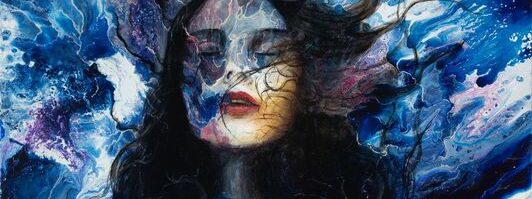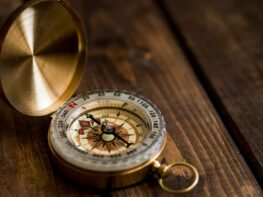If we’re seeking awakening, No-self is what we want to understand.
Yet, this is no easy feat. Our whole life has been built around this sense of self. This insight challenges this directly. Therefore, knowing some theory is indispensable for practice.
This article aims to provide an depth view of no-self to assist in the cultivation of this insight.
To do this, we’ll first look at what No-Self is, what it isn’t and then wrap up with some practical techniques to experience it directly.
WHAT IS NO SELF:
No self is the translation of the Pali word Anatta. It’s the experience of intimacy with all things. Of unity, of connection.
In this state, the sense of subject-object duality disappears. There is simply pure experience with no divisions.
You see - conventionally we are so attached to the self. When we aren't invited to a birthday party, sadness arises. If we are yelled at, anger arises. When we post content on social media, we feel vulnerable from fear of criticism.
What's driving these mad tape loops of suffering? Primarily, there are four assumptions that we unconsciously act out in our day to day lives. These are that we believe ourselves to be a permanent, separate, acausal, independent self.
For liberating insight into no-self, these assumptions must be deconstructed and eventually intuitively understood to be illusory.
Let’s now spend some quality time breaking down these assumptions then, shall we?
Permanent self:
We feel as if we’re an unchanging, permanent, static entity – that this bundle of sensations and mental processes is who we are. Let’s challenge this with the ‘who are you?’ experiment.
When asked who you are, you might start by saying that you’re the body. In that case, are you your fingers? Your toes? Perhaps your leg? But if that were the case, wouldn’t the ‘I’ disappear if any of these body parts were removed? It doesn’t, does it? The ‘I’ we’re looking for therefore cannot be the body.
What about thoughts? Perhaps that’s where this ‘I’ is to be found. But thoughts come and go, and when they go, the sense of ‘I’ doesn’t disappear! We therefore can’t be our thoughts.
Perhaps we’re something more intimate like our emotions, then. But like thoughts, emotions also come and go like waves in the ocean - and you guessed it, the sense of ‘I’ still remains when they change.
Surely the observer that is perceiving all of this unfold is this ‘I’ we are looking for. The thing that feels like it’s in the driver’s seat controlling our experience. But when we pay close attention and try to look for this ‘observer’ it seems to constantly move! One moment it feels like a cluster of sensations in the middle of the head, then it's observing those sensations in the head, then it’s our vision, then it’s a tightness in the throat. How could we possibly be the thing that has multiple identities shifting its locus constantly?
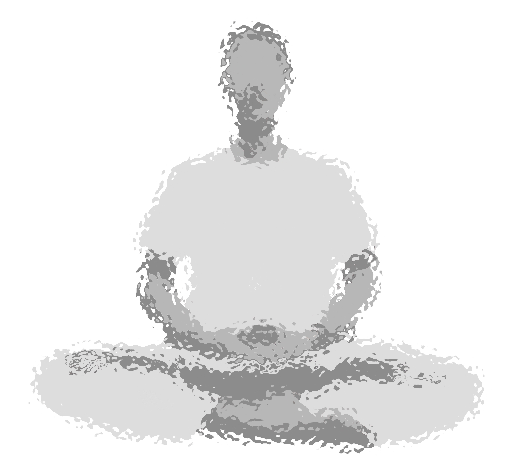
You see, there is no permanent self. If there were, who we were as a baby would be the same entity as who we are today. In each moment, we are anew. There is only process.
Learn more about this key understanding in my article on Impermanence.
Separate self:
We’re absolutely convinced that we are separate to everyone and everything. Things appear to be ‘over there’ and we’re ‘over here’. This is partially true. Even when you awaken, you will still be here from a conventional point of view.
You don’t see the mountain; you are the mountain. You don’t hear a bird; you are a birdsong. – Michael W Taft.
However, with high levels of realization, practitioners come to realize that what we call ‘I’ is merely a fluxing collection of physical and mental sensations occurring in space in an integrated way. Likewise, that space is also fluid and transient. In that sense, we are connected to that space. The only difference is that we are have a sense of experience from a certain vantage point.
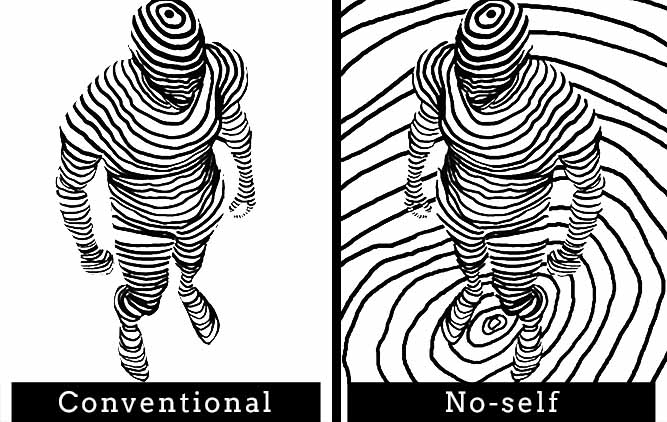
Acausal Self:
The sense that we’re consciously making decisions and have free will is a delusion from the ultimate perspective.
Since the very first moment of our creation, external factors conditioned our psyche.
Parental genetics influenced character traits, children at school laughed at us mockingly, bosses at work scolded us for making a mistake.
Notice then, that our psyche is formed by events outside of our control. These events in themselves were also due to causality.
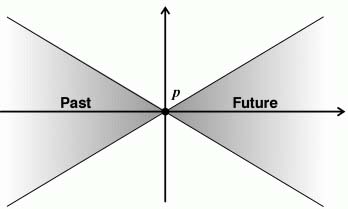
Absolutely nothing escapes the cone of causality which expands the entire universe. From this ultimate perspective, we can have utmost compassion for ourselves and others. Any action we take can be realized as the best thing we could have done in that given moment.
How liberating!
Empty self:
Another aspect of no-self is emptiness. We are totally convinced that our way of perceiving the world is the way things truly are in the objective universe. As you might have guessed, this is also illusory.
Humans have unique biological systems that interpret sense data coming in from the world. Let’s consider the colour red, for example. 'Red' is actually electromagnetic radiation. Objectively, it doesn’t even exist in the universe – rather, it is a construct of generated entirely by the mind.
This expands all subjective experience. Emotions are also a mental construct. The universe doesn’t feel emotions. Rather, there’s mere chemical reactions occurring within the framework of the body that our nervous system has developed to interpret as pleasant, unpleasant or neutral.
This also applies to taste, touch, smell, hearing and sight. Absolutely everything is generated by the mind in an extremely well-constructed illusion conditioned from birth that we unknowingly pretend to be truth.
This shouldn't discount sensory experience, however. Things certainly 'feel' real. After all, deeply rooted systems are at play that have evolved for millions of years for our survival. I'm looking at you, Amygdala.
That being said, it's incredibly liberating to keep the ultimate perspective in the back of our minds.
When you realise that you are not a separate self, that the self is an illusion, that the self is empty, it is totally liberating. You cease to cling and crave, and when you cease to cling and crave, you cease to suffer. – John Yates.
Putting the no-self illusions in context:
Upholding these four illusions is costly. Why? It takes a lot of energy to do so of which is the driving force behind all suffering. Deconstructing the illusion is therefore an extremely good idea. It’s not that we are trying to get rid of the self. Afterall, it was never there to begin with. However, we must continually see how this illusion is created in different moments to awaken.
When we do, we suffer unimaginably less, develop compassion for ourselves and others and transform our perception of the world to a vastly superior reality.
WHAT NO-SELF ISN’T:
There are several common misinterpretations of no-self. It's helpful to not fall into the trap of buying into them. Let's explore these now.
No-self is not a means to justify nihilism.
Unfortunately, there will be those who take these realizations to justify nihilism. If everything is an illusion, why shouldn’t I steal the final cookie from your roommate’s cookie jar? Or hell, why shouldn’t I rob this bank?
After all, “It’s all an illusion, maaan.”
Well, it turns out doing good is a really, really smart idea. For one, we’re nodes in a network. For a better world, we must act with compassion toward others. When we do good it ripples outwardly in an unfathomable cascade of events.
At first, we might be more concerned for our own welfare though. In this case, it’s consoling to know doing good also benefits us by creating more beautiful, positive emotions in us like love and compassion which can eventually expand outward.
This is also why the Buddha emphasized training in morality as the first training in spiritual development.
No-Self is not the annihilation of the Ego
The Jungian Ego is not our enemy. We would become psychotic and dysfunctional without it.
This may seem paradoxical at first. If there were no-self, wouldn’t that by definition mean letting go of identification with the ego? Well, to an extent.
Prior to realization of no-self, the ego dominates experience unconsciously. When realization is developing or fully embodied, we gain control over it.
How?
Because our perception toward our experiential reality changes entirely. Eventually, (and perhaps this is quite idealistic) we can choose whether to identify with it or not depending on whether that leads to better outcomes. In other words, we can wear the ego like a coat and take it off when it’s not needed.
Wear your ego like a loose fitting Garment – The Buddha.
Other No-Self misconceptions:
Some believe that when no-self is realized we will dissolve, evaporate or lose our sense of presence in the world. Others believe the sense of unity discovered from no-self perspective shifts enable telepathic abilities. These are both delusional.
PRACTICALLY REALIZING NO-SELF
The ability to engage with the no-self perspective shift in any given moment is what distinguishes beginners from the heavyweights.
While it might seem impossible to operate from this place and that there is no end to identifications with the body, thoughts, emotions and possessions – there are only so many sensations we can identify with. Consider the below illusion – is it a rabbit or a duck?
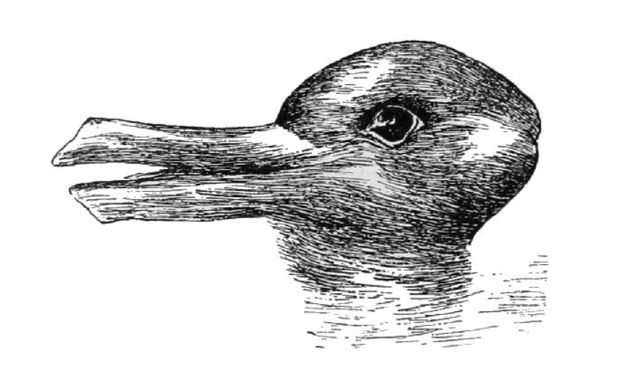
It's actually both (the two extensions coming off the circular mass with an eye are both a duck beak and rabbit ears).
In the same way, we can flip over to realize no-self. Same sense data, totally different perception.
There are many ways to do this with two general approaches. These are the no effort and effort models.
One tradition might adhere to one model, one to another, or one to both. I am confident that a combination of the two is most effective from a pragmatic lens. One must decide for themselves which approach to take.
We have to stop the process of mentally creating the illusion of a separate self from sensations that are inherently non-dual, utterly transient, totally causal, without any actual boundaries that could construct a separate self – Daniel M Ingram.
The No Effort Models:
The no effort models essentially say that if there is no self to begin with, there is nothing to do but notice this truth in order to awaken to it.
Practice:
Recognize how you feel like there’s a person inside you who is having all these experiences. Just let that feeling arise in spaciousness and pass away. What is left, outside of all the content of sense experience and the sense of being somebody is no-self. When I say “just let those arise in spaciousness and pass away,” I don’t mean make them go away. I just mean that you sort of let them be, without interacting with them. Let them flow and move and dance without interference. What’s left is a kind of spacious awareness, without the sense of there being anybody at the centre of it. – Michael W Taft.
Put another way, realize that we can’t say “don’t feel sad”. That we can’t say, “Everything stop.” Phenomena follow their own laws that we can choose be in accordance with or not. I find this particularly useful if I am feeling anxious and contract into a sense of self – where I really feel like “I am responsible for feeling this way.”
It’s unbelievably liberating to realize the ultimate reality – that all of this is happening due to causes and conditions outside of my control, of which are constantly changing. All that’s left to do is become witness to the dance of sensations and their empty nature.
As far as the no effort model of practice goes, that’s really all there is to it. Rest into the fact that sensations just show up on their own, do their thing, and pass away. Become witness to the fact that you’re not consciously deciding what arises.
The Effort Models
The effort models say that while yes, there is an underlying no-self characteristic to our experience, there’s also a lot of conditioning and psychological blocks that makes it difficult to access. By meditating on no-self we are removing these blockages.
Practice:
One method we can use when we feel like there is truly an ‘I’ governing this mind and body who is calling all the shots is to turn your attention to the sensations in the body that are driving this illusion. Simply observe them at a rate of 1-10 times per second arise and pass away.
Get a handle of what is the driving force behind this identification with self. A fascinating way to become familiar with this illusion is to mentally incline the mind toward being a self. This can be done by mentally speaking to yourself ‘I am (x)’, where 'x' can be substituted for anything related to being a self. For Example, 'I am Sam', or, 'I am a happy person.'
Become familiar with the subtle sensations that arise as a result. Usually, but not always - they arise in the head region. This direct perception of sensations constituting a feeling of ‘I’ seen over and over again begins to make us aware, perhaps for the first time, of the very subtle sensations that anchor us in a contracted sense of self.
Another method is simply to engage with thought experiments to challenge our conditioning. Ask yourself: Who is experiencing all of these sensations? Try to actively track down what is responsible for creating the illusion of a sense of self. When we continue to see that no sensations are who we are through direct perception of impermanence, any sense of self crumbles.
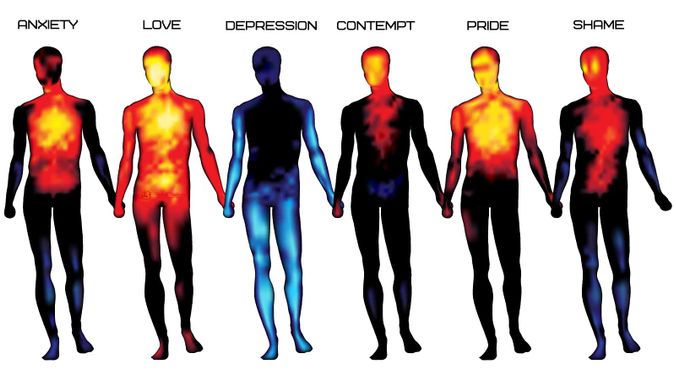
Final Tips:
Perhaps one of the most important pitfalls to become aware of is trying to identify with a sense of 'unity' with the universe. We may develop the tendency to think: 'Ohh okay, now I get it. Now I understand, this is who I am. I'm the universe!' Meanwhile, we're subtly identifying with sensations that continue to buttress a sense of self.
To combat this, another formal practical instruction is to realize that if there are any sensations that habitually fail to reveal their true nature automatically, and thus falsely imply duality, then those sensations are what must be investigated carefully to deconstruct anything upholding the illusion. Continue to reject unitive and no-self experiences as 'being it' and search for sensations that may be causing a sense of self that make those experiences up.
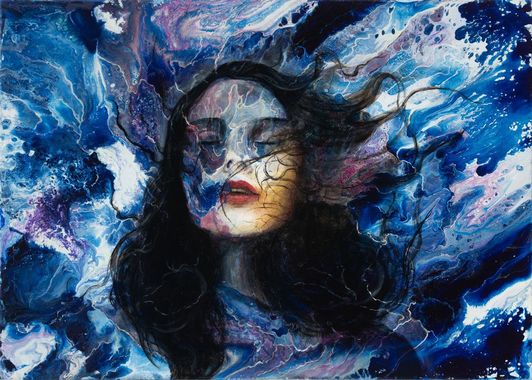
It is also common for a meditator to say things like “I am always identifying with x emotion!” Avoid doing this at all costs. I’m definitely a victim of doing this in the past.
At the end of the day, this is a direct failure to perceive the illusory nature of the self and further conditions the tendency to engage with stories of mind. Rather, a more skillful means would be to bring forgiveness and an attitude of “oops, I identified with that sensation. I’ll try my best to not do that again in the future!” and proceed to move forward from this moment.
Remember, with the understanding of causality, reacting was the best the mind could do at the time. The worst thing you could do is beat yourself up over identifying with a sensation.
Guided meditations are also extremely powerful for realizing no-self. I recommend Sam Harris’s waking up app for beginner-intermediate practitioners and Michael Taft’s guided meditations on non-duality for the more hardcore practitioners out there. Sometimes, listening to a single guided meditation may offer a new perspective.
CONCLUSION:
When we penetrate the illusion of no-self over any over again throughout the day, eventually this state pervades. Our true nature begins to dominate experience.
Coupling understanding of the theoretical components of what creates the illusion of self outlined in 'what is no self' with formal practice instructions outlined under 'Practically realizing no self' is an excellent way to shatter the illusion.
When we do, a weight is lifted off our shoulders. We discover the antitode to the migrane of a sense of self we've dealt with our entire lives. We live in a more unitive, compassionate, forgiving, free, beautifully transient world. May it be realized for all beings.
Perhaps the best way to wrap up will is through a poem by Kalu Rinpoche:
We live in illusion
And the appearance of things.
There is a reality.
We are that reality.
When you understand this,
You will see that you are nothing.
And, being nothing,
You are everything.
That is all.
Metta.
Check out my other pragmatic guide for realizing Impermanence.
Recommended reads to strengthen practice:
